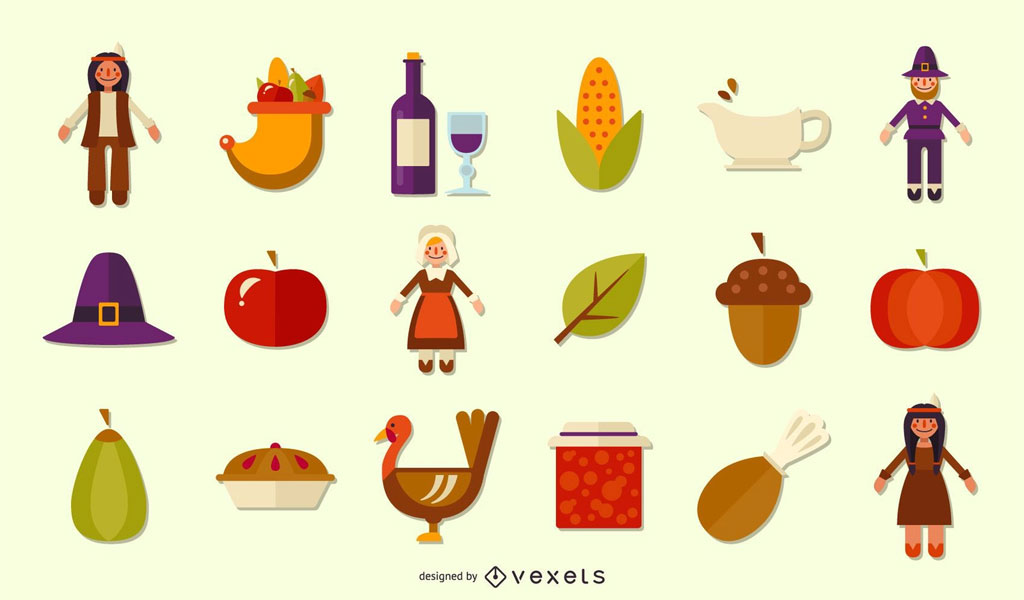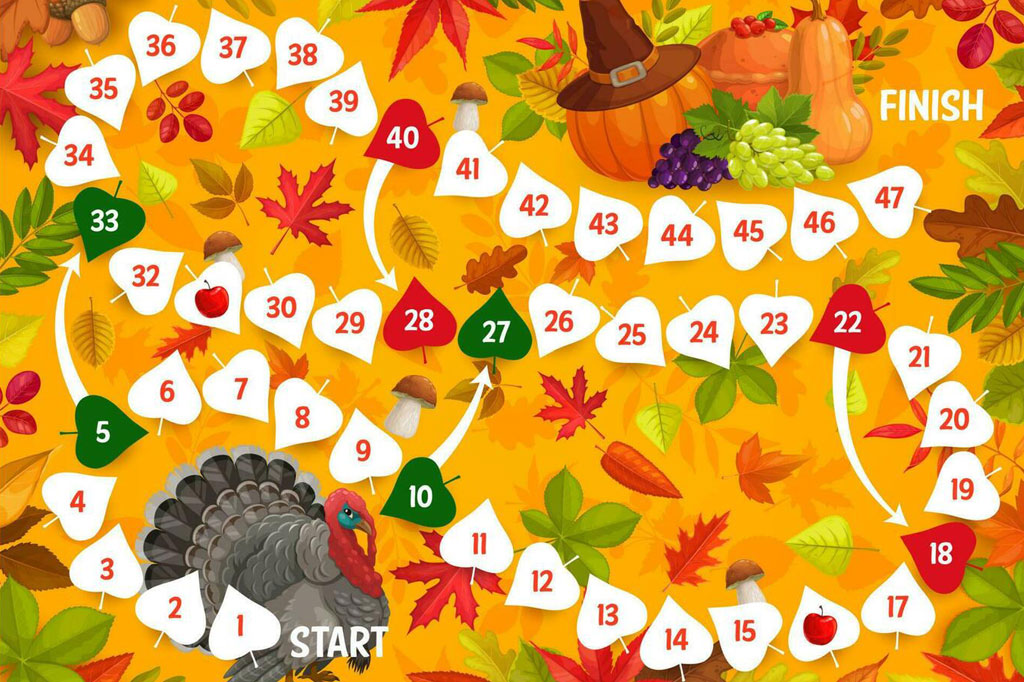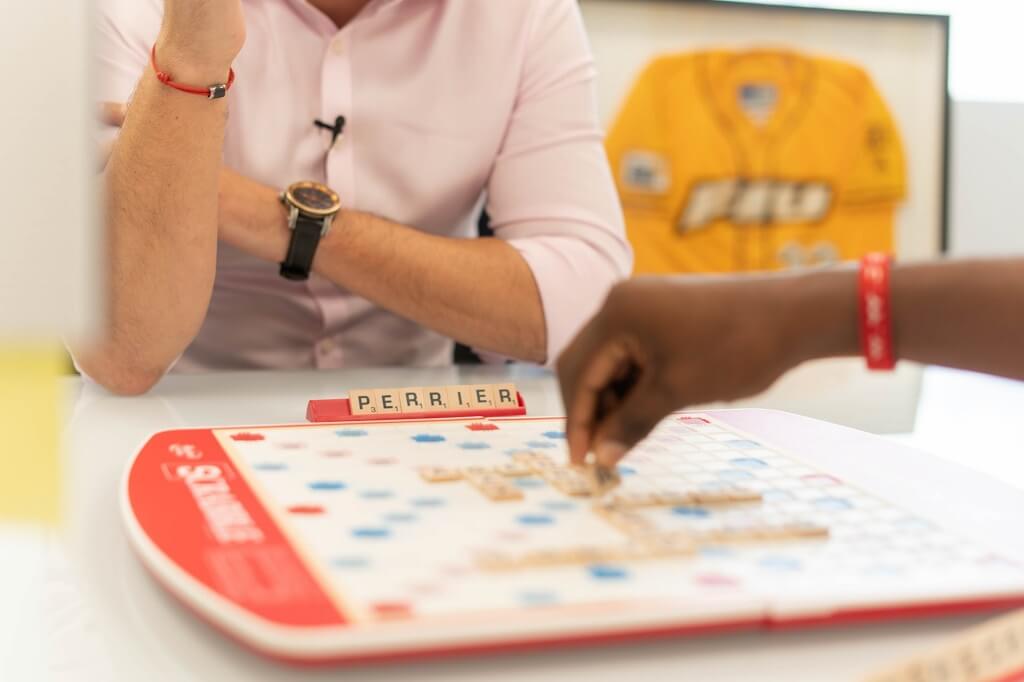Thanksgiving is a holiday rich with traditions – family gatherings, delicious feasts, heartfelt gratitude, and plenty of laughter. These qualities make it a perfect inspiration for a board game.
Whether you’re designing for commercial release or crafting a homemade game for family fun, a Thanksgiving-themed board game can capture the warmth and joy of the season while offering a memorable group activity.
This guide walks you through each step of creating your Thanksgiving board games, from concept development to playtesting.
Table of Contents
1. Define Your Game’s Purpose and Audience
Before putting pen to paper (or turkey to cardboard), determine:
- Who will play? Is this a family-friendly game for all ages, or a strategy-driven game for adult players?
- What’s the tone? Light and silly? Competitive? Cooperative? Educational?
- What’s the setting? Around the dinner table? During a road trip to grandma’s? In the kitchen prepping the feast?
For example, a family-friendly game might focus on collecting ingredients for a perfect Thanksgiving meal, while a party game could involve quick-fire “Thanksgiving charades” or trivia. Setting clear boundaries early helps guide your theme, complexity, and design choices.
2. Build a Festive Theme Around Thanksgiving Traditions
Thanksgiving offers many thematic directions:
- Feast Preparation – Players race to gather ingredients, cook dishes, or set the table before dinner.
- Family Gathering Adventures – Manage seating arrangements, avoid awkward conversations, or complete tasks without causing family drama.
- Historical/Educational – Explore the origins of Thanksgiving, Native American contributions, or harvest celebrations through trivia or storytelling.
- Travel Challenges – Navigate traffic, weather, and unexpected obstacles to arrive at the big dinner on time.
Whatever you choose, infuse your theme with recognizable Thanksgiving symbols – turkeys, pumpkins, cranberries, cornucopias, pies, pilgrims, and autumn leaves, to create a strong visual and emotional connection.

3. Choose the Core Game Mechanics
Your mechanics are the backbone of your game. They determine how players interact, strategize, and progress. Consider these popular mechanics that work well for Thanksgiving themes:
- Set Collection – Players collect matching ingredient cards (e.g., turkey, stuffing, pie) to complete a meal.
- Resource Management – Balance time, money, or food portions to satisfy everyone at the table.
- Movement and Race – Move around the board to complete errands before dinner starts.
- Cooperative Play – Work together to prepare the feast before the timer runs out.
- Party/Trivia – Answer Thanksgiving-themed questions or act out holiday scenes to earn points.
Choosing one or two mechanics and sticking to them ensures your game feels cohesive and easy to learn.
4. Design the Game Components
A Thanksgiving-themed board game’s charm often lies in its components. Common elements include:
- Game Board – A kitchen, a dining room, or a map of the town could serve as the playing surface.
- Cards – Ingredient cards, challenge cards, trivia questions, or “family drama” event cards.
- Tokens/Pieces – Shaped like turkeys, pies, leaves, or corn.
- Dice/Spinners – For movement, random events, or resource generation.
- Score Trackers – Mini place mats or “pie slices” to track points.
If you’re going DIY for family use, printable cards, a hand-drawn board, and small household objects can work. For a commercial design, invest in high-quality graphics, durable materials, and a professional, eye-catching presentation.
5. Create Thematic Rules and Goals
The rules should reinforce the Thanksgiving theme and be simple enough for new players to understand quickly. Keep in mind:
- Main Objective – Is the goal to prepare the best meal, host the happiest guests, or survive family antics?
- Turn Structure – Decide what players can do each turn (e.g., draw a card, roll dice, move, take actions).
- Winning Conditions – Collect the most points, finish the meal first, or complete all cooperative tasks before the time limit.
For example, in a “Feast Frenzy” game, players could roll a die to move around the kitchen board, collect ingredient cards, and race to assemble a full meal. Bonus points could be awarded for desserts or special dishes.
6. Add Humor and Relatable Scenarios
Thanksgiving board games thrive when they tap into relatable and often funny aspects of the holiday:
- Aunt Susan telling the same story every year.
- A burnt pie emergency.
- Sibling rivalry over the last turkey leg.
- The “kids’ table” chaos.
Adding these comedic touches through cards, challenges, or artwork makes the game more engaging and memorable.
7. Test and Balance Your Game
Playtesting is where your concept comes to life—or reveals its flaws. Test with different groups:
- Family with mixed ages – See if the rules are clear and the game pace works for younger players.
- Friends familiar with board games – Get feedback on mechanics, balance, and replay value.
- Casual players – Ensure accessibility for those who don’t play games often.
Adjust based on feedback:
- Shorten overly long turns.
- Balance card powers so no player has an overwhelming advantage.
- Clarify confusing rules or remove unnecessary complexity.
8. Focus on Replayability
The best holiday games keep people coming back each year. Increase replay value by including:
- Randomized Setups – Shuffle ingredient cards or start players in different positions.
- Multiple Strategies – Offer more than one way to win.
- Optional Rules – Add “expert mode” for competitive groups.
- Expandable Content – Seasonal add-ons (e.g., “Winter Feast” expansion).
9. Polish the Artwork and Packaging
For a commercial game, high-quality visuals can make or break first impressions. Thanksgiving artwork should feel warm, inviting, and colorful. Use:
- Deep oranges, browns, reds, and golds for an autumnal feel.
- Friendly, cartoon-like characters for family games.
- Elegant illustrations for more sophisticated audiences.
Even for a DIY version, take time to create neat, colorful designs. If you’re crafty, consider hand-painting pieces or using decorative scrapbook paper.
10. Share the Fun
Once your Thanksgiving-themed board game is complete:
- Family Gathering – Introduce it at the holiday dinner for instant laughs and bonding.
- Community Events – Offer it for school events, church gatherings, or local holiday fairs.
- Online Platforms – If you want to share commercially, consider Kickstarter, publishers or game-publishing websites.
If it’s a family-only game, you can still print multiple copies to gift to relatives—your game might become a treasured Thanksgiving tradition.
Example Concept: “Turkey Trot Showdown”
- Theme: Players are contestants in a quirky town race to deliver Thanksgiving dinners to various households before the feast begins.
- Mechanics: Movement-based gameplay with dice rolls, event cards, and set collection of meal items.
- Objective: Be the first to deliver all assigned meals while avoiding mishaps like “Pumpkin Pie Slip” or “Gravy Spill.”
- Replay Value: Randomized event cards and household delivery routes keep the experience fresh.




